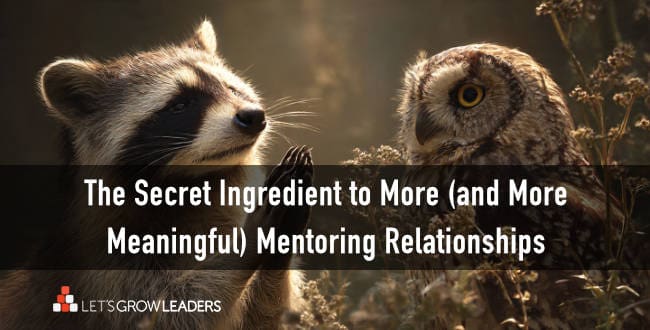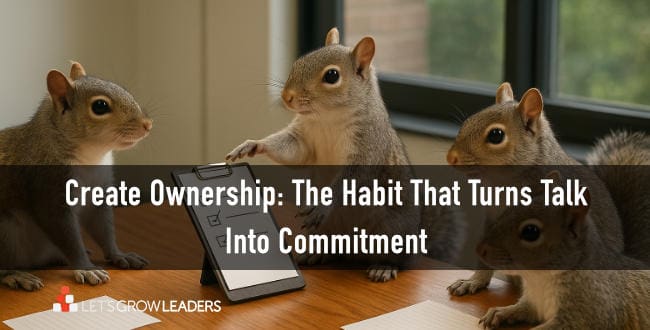It’s easy for true gratitude to get lost in the swirl of formal recognition programs, everyday courtesies, and the relentless push for more and better. Progress is good. You need recognition. And courtesy is vital. But none of these are genuine gratitude.
True gratitude begins with deep humility. It changes us.
True gratitude transforms our relationships. It changes the game.
Courtesies Aren’t Gratitude
And yet many leaders try to check the gratitude box with a “Thanks-for-passing-the-gravy” kind of gratitude.
- …thanks for this report
- …thanks for the update
- …thanks for coming to the meeting
- …thanks for returning my call
Those courtesies are important. We need them. But they aren’t gratitude.
Recognition Isn’t Gratitude
Many organizations also do a pretty good job with formal recognition — taking time to determine who deserves the plaque, the award, and a celebration. These ceremonies may come from a place of deep gratitude, but not necessarily. Often, they are based on numbers, rankings, or “it’s that time of year.” You won’t find gratitude in a spreadsheet or calendar.
True gratitude involves a deeper pause of thanksgiving. But many leaders, at every level of organizations, miss this vital pause.
Gratitude is missing when…
- an executive hears a presentation and immediately responds with questions, concerns, critiques and challenges, without a pause to consider the depth and breadth of work entailed, the long hours, and the creative thinking.
- a middle manager, frustrated in his current role, overlooks his long career of exciting challenges and developmental experiences.
- the team leader acknowledges the team’s steady progress, but fails to understand the deep personal sacrifices of her team.
- a team member resents the promotion of a coworker, and overlooks all the ways he has grown himself in the past year.
Thanks and recognition are about the receiver. As leaders, it is our job to say “thank you” and recognize good work.
But true gratitude is also about the giver. Genuine gratitude transforms your leadership.
An Inexhaustible Source of Leadership Gratitude
One source of gratitude that never runs dry is the recognition of choice.
People don’t have to follow you, don’t have to show up, and don’t have to bring their creativity or initiative.
They choose to.
Even your direct reports don’t have to follow your leadership. Every day people make a choice to be a part of your team. To contribute and engage. Or not. But it’s always their choice.
“Wait a minute,” you might say, “if they don’t do their job we can fire them.”
You’re right of course, but that’s their choice. True gratitude begins when you realize that everyone’s a volunteer. They choose:
- If they will be a part of your team.
- How they will show up.
- Whether to participate fully or phone it in.
- The level of effort they will give.
- How well they will perform their role.
When you embrace this fundamental truth – that everyone is a volunteer – it will change your leadership forever. Every action from every person on your team becomes a gift.

“Everyone is a Volunteer” David shares from a keynote stage
Every ounce of energy they spend on a project is a gift. Your leadership work shifts from force to invitation, from control to influence, from fear to gratitude. You won’t lead to wring out the worst, but to bring out the best.
Practical Ways to Practice True Gratitude
Cultivating gratitude will open daily opportunities to communicate your encouragement and genuinely thank people for their choices and contributions. Here are three suggestions to make the most of these moments.
1) Focus on the Person, Process, and Outcomes
There’s a big difference between gratitude for what a person does and the person themselves. Acknowledge the person, the process, and the outcome.
Person: Sometimes a simple, straightforward, “I appreciate you” are the most powerful words you can say.
Process: “I am so grateful for how you’re approaching this problem. I see how diligently you’re working.” It’s not always about the outcome.
If you’re familiar with how to Respond with Regard to fuel innovation and ideas, you’ll recognize the first step as gratitude for their process: “Thank you for thinking about how we can improve.”
Outcome: “You did it! I am so grateful for what you’ve accomplished here.” In our rush to the next goal, it’s easy to forget gratitude for the outcomes. Taking time to look people in the eye or send a hand-written note to communicate your gratitude will cement that achievement for you and your people.
2) Be Specific and What and Why
Even leaders who are good about expressing gratitude often focus on what they’re grateful for. But that’s only half of the story.
What they did, or are doing, is important. And, you’ll increase the value of your gratitude when you finish the story by sharing why it matters.
For example, “I’m grateful for the extra time you put in with that customer, or solving that patient’s complaint or resolving that our client’s issue. I saw the extra work and the customer called me and told me what a difference that made to them. Or the patient noted in her comments after she checked out how meaningful that was to her and her family and how much she appreciated it.”
3) Mix Up Silence and Growth
There are times when it makes sense to start a coaching conversation with gratitude.
For example, if someone’s bringing some unorthodox solutions that don’t make immediate sense to you, you can start with: “I am grateful for the work you’ve put in on this project and the creative solutions you’ve uncovered. And, I’d like to explore how you see these fitting into our strategic priorities.”
In the ensuing conversation, you might get insights into new creative approaches, or the team member might learn more about what matters most and how they can contribute.
But you want to be careful about always following up gratitude with growth opportunities. Too many “I’m grateful, and…” conversations will undermine your gratitude and make people feel like nothing they do is ever good enough.
Sometimes gratitude followed by silence is the most effective.
And so, we want to conclude with gratitude of our own.
We are grateful for you and your commitment to human-centered leadership. We see you try, learn, get up, and try again.
And with your consistent effort, you make a difference. To your people, to your community, and to the world.
Thank you.
And Dear Leader…if work without human-centered practical leadership training is getting a bit too edgy for your liking – or your strategies just aren’t working like you need them to – visit our Live (online or hybrid) Leadership Training page to learn how to build and sustain company-wide change.









Interesting and insightful read! Yep! True gratitude begins with deep humility.
Thanks, Say!
That connection between gratitude and humility is so critical.